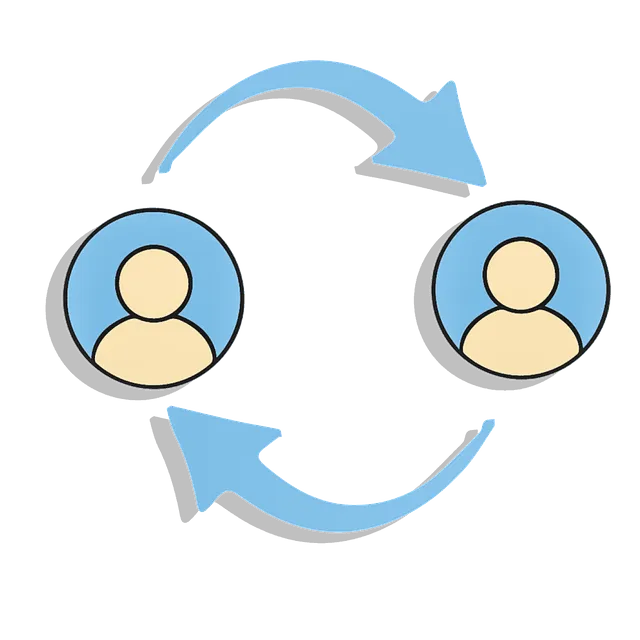Mastering Developer Productivity Analytics: A Guide to Boosting Team Efficiency
Understanding Developer Productivity
Developer productivity is ultimately a measure of the efficiency and effectiveness with which software developers produce high-quality code and complete projects. Where this becomes a bit more complicated is in the relationships between those efforts and the measurements that reflect them. The software development process is often quite complex, and although you could certainly measure the sheer number of lines of code or pull requests, these metrics don’t reflect the quality of the material developed. These quantitative measurements represent only half the picture and are focused almost exclusively on the act of writing code. On the flip side, you could focus entirely on qualitative data points, such as the quality of the code and the ease with which this code was generated, and so forth. The problem with focusing so heavily on this aspect is that you only capture half the picture again - making one contribution that is incredibly dense or high quality doesn’t mean much when there are thousands of tasks to accomplish.  Accordingly, effective developer productivity analytics require a combination of both qualitative and quantitative data at different levels from various sources. The entire team must be encompassed by this metrics system, allowing for the integration of each team member’s individual performance with the overall efficacy of the development practices and efforts at scale. This effort must include a wide range of factors, including:
Accordingly, effective developer productivity analytics require a combination of both qualitative and quantitative data at different levels from various sources. The entire team must be encompassed by this metrics system, allowing for the integration of each team member’s individual performance with the overall efficacy of the development practices and efforts at scale. This effort must include a wide range of factors, including:
- Code quality - Specifically, measurements around the introduction and resolution of bugs in code, the density of code, and the incidence of errors.
- Collaborative efforts - How much of the developer and team performance is impacted by collaborative efforts, and how these efforts have impacted overall time and resource allocation.
- Time to market/release - The time between the creation of development goals based on business objectives and when the product is actually released.
- Effective time utilization - This metric compares the time spent in development to the actual product developed, allowing for a rough measure of relative efficiency.
- Overall developer experience - This is somewhat of a soft measurement focused on the perceived qualitative experiences of the developers, measuring the overall developer experience and the ease of product creation.
Challenges of Measuring Developer Productivity
Actually, measuring productivity can be a complex process. This complexity arises because many factors that reflect effective software development and team productivity—notably, collaboration, creativity, and ease of development—are not as quantifiable as other metrics such as technical skills, reduction of technical debt, and speed in completing repetitive tasks.  For this reason, it can be challenging to track these “soft skills” and generate actionable insights in traditional metric-based systems. The typical product metrics approach fails to capture the subtle dynamics of a development team, their alignment with company culture, their innovative use of existing systems, creative problem-solving, and so forth. In order to resolve this issue, more sophisticated and qualitative metrics are needed, but they must be integrated within the context of traditional systems to provide a comprehensive view of developer productivity.
For this reason, it can be challenging to track these “soft skills” and generate actionable insights in traditional metric-based systems. The typical product metrics approach fails to capture the subtle dynamics of a development team, their alignment with company culture, their innovative use of existing systems, creative problem-solving, and so forth. In order to resolve this issue, more sophisticated and qualitative metrics are needed, but they must be integrated within the context of traditional systems to provide a comprehensive view of developer productivity.
Key Metrics and Productivity Frameworks for Measuring Developer Productivity
To accurately measure developers’ productivity, you need to measure across three main dimensions - speed, ease, and quality. Each area will give you a particular focus on an aspect of development; it is important to note, however, that these systems are complementary. In others words, improvements to speed may not necessarily lead to improvements in quality, and efforts made in quality may not necessarily improve the ease of development. Achieving the right balance of these three categories is just as important as maximizing their values across the board.  One way to circumvent this issue is to adopt a framework. Frameworks facilitate the measurement of specific attributes within a contextual body of metrics, resulting in a clearer view of team dynamics, developer satisfaction, overall business value, and total development efficiency. The downside of frameworks is that they often focus on just one aspect of the overall development narrative. For this reason, adopting multiple metrics can be helpful in the long run, as they reside in different teams and areas of focus.
One way to circumvent this issue is to adopt a framework. Frameworks facilitate the measurement of specific attributes within a contextual body of metrics, resulting in a clearer view of team dynamics, developer satisfaction, overall business value, and total development efficiency. The downside of frameworks is that they often focus on just one aspect of the overall development narrative. For this reason, adopting multiple metrics can be helpful in the long run, as they reside in different teams and areas of focus.
The DORA Framework
One framework that has found particularly widespread use by engineering and development teams is the DORA Framework, developed by the DevO**ps Research and Assessment organization. This framework is largely based on quantitative metrics and provides a good way to get a baseline understanding of how your teams are performing in context. The framework measures four key areas - Deployment Frequency, Change Lead Time, Time to Restore Service, and Change Failure Rate. These metrics are placed into two groupings that represent Stability and Throughput:
-
Throughput - The amount of code produced.
- Development frequency, e.g. how often the application updates and changes are pushed to production.
- Change lead time, or how long it takes for a commit or change to actually be reflected in production.
-
Stability
- Time to restore service, or how quickly you can recover from a failed deployment.
- Change failure rate, or the percentage of production failures that require rollbacks, hot fixes, or patches.
In theory, these two categories reflect both the qualitative and quantitative data surrounding development, with throughput measuring output and stability measuring quality. Where this encounters some issues is in the fact that it glosses over certain soft skills on the team side. Measuring lead time for changes or the speed of fulfilling a pull request is one thing, but attempting to measure individual performance or overall alignment with core values is entirely another. The DORA metrics are very useful for a specific subset of quantitative and qualitative metrics, but they fall short in some key areas.
The SPACE Framework
The SPACE Framework is a complimentary system to measure the efficacy of development teams while enabling teams to adopt and measure new strategies to enhance productivity.  The framework tests a few specific categories - Satisfaction and Well-Being, Performance, Activity, Communication and Collaboration, Efficiency and Flow.
The framework tests a few specific categories - Satisfaction and Well-Being, Performance, Activity, Communication and Collaboration, Efficiency and Flow.
- Satisfaction and Well-Being - This metric measures the contentment of the team in their roles, reflecting satisfaction, burnout, physical and mental health, and overall morale. It is especially useful for gauging the overall “drag” on team morale due to tooling or heavy development processes.
- Performance - Focused on the actual outcomes of work, this metric reflects the features developed, bug fixes, and overall customer satisfaction. This is one of the two core “hard metrics” in the SPACE framework and could indeed be sourced from the aforementioned DORA framework for tighter integration.
- Activity - This is the second “hard metric” in the SPACE framework, representing the total volume of work across committed code, completed tasks, lines of code written, and so forth. This is very much a hard metric and, as such, is only truly useful when combined with the rest of the framework.
- Communication and Collaboration - This is perhaps the softest of the metrics within the framework, but in many ways, it is also the most important. It measures how effectively team members work together. This area is significant because it represents an aspect often ripe for productivity gains and can indicate how effective your strategies are at encouraging developers to work collaboratively rather than in isolation.
- Efficiency and Flow - This is a blend of hard and soft metrics, as it measures the frequency of interruptions, context-switching, and other flow-state metrics. In other words, this metric is a pure measure of productivity, encapsulating both the hard facts of output and the qualitative aspects of the experience involved in generating that output.
The DevEx Approach
For many organizations, adopting two frameworks that feed into each other or compliment one another might be too complex compared to just adopting a single approach. There is a certain inefficiency that is introduced with tracking and measuring, and as such, a unified approach is preferred in the developer community.  The outcome of this preference is the DevEx approach. Developed by the team responsible for the SPACE Framework, it shares a similar emphasis on continuous improvement and monitoring developer productivity through reflective metrics. However, the DevEx approach places a greater emphasis on technical attributes that signify high efficiency. In essence, the DevEx approach focuses on three core areas - feedback loops, cognitive load, and flow state. Each of these metrics represents a blended view of the development cycle, and can both measure productivity as well as represent the experience of the developers within that cycle.
The outcome of this preference is the DevEx approach. Developed by the team responsible for the SPACE Framework, it shares a similar emphasis on continuous improvement and monitoring developer productivity through reflective metrics. However, the DevEx approach places a greater emphasis on technical attributes that signify high efficiency. In essence, the DevEx approach focuses on three core areas - feedback loops, cognitive load, and flow state. Each of these metrics represents a blended view of the development cycle, and can both measure productivity as well as represent the experience of the developers within that cycle.
- Feedback loops - The process of generating and reporting feedback on efforts, and using that feedback to integrate new fixes, processes, or implementations. This can also include feedback based on code review, lead time, overall developer satisfaction, etc.
- Cognitive Load - This represents the mental burden associated with developing and iterating. It is particularly useful for gauging the efficacy of development from the developers’ perspective, which can yield significant insights into the efficiency and ongoing effectiveness of processes by assessing the end results from the perspective of those who actually use the tools.
- Flow State - The flow state refers to the capability of developers to perform their work without interruptions such as meetings, unplanned tasks or requests, or issues with tooling. This metric focuses greatly on quality and, similar to cognitive load, can provide insights into other related factors and metrics.
The DevEx approach is flexible in representing both qualitative and quantitative metrics. It allows for flexibility in the metrics to be measured, the interpretation of those metrics, and ultimately the final output of the systems in question. This versatility has rendered it highly favored among teams aiming for comparative analysis across different teams and systems, all the while necessitating a robust framework to ensure reliable comparability.
Strategies for Improving Developer Productivity
Improving developer productivity involves a variety of steps and can differ from team to team, as well as from one implementation to another. Accordingly, it’s best to consider a few general categories of potential areas for improvement, considering your specific deployment and the reality of your team as it currently exists.
Optimizing Workflows
Workflows are fundamental to any development team, and enhancing these workflows will naturally boost developer productivity. To effectively optimize these processes, there are several steps you need to take, regardless of your specific implementation.  First and foremost, conducting a thorough review of the existing workflows is essential. Optimization cannot commence without a clear understanding of what is currently in place. Therefore, the initial step must be exhaustive, capturing the complete range of workflows employed across the organization. From that point, it is vital to identify any obstacles, whether they are minor or significant. For this analysis to be fruitful, detailed documentation is needed. Evaluate what might hinder the effective and efficient operation of each workflow, and assess whether these barriers serve a purpose. For example, a seemingly excessive delay in code review could be justified if it involves checks for GDPR compliance or other regulatory requirements. After identifying blockers that are suitable candidates for optimization, the next step is to strategize the best ways to address these issues. It’s crucial to avoid creating new problems while solving existing ones. Therefore, you must ensure that the proposed solutions are both effective and beneficial.
First and foremost, conducting a thorough review of the existing workflows is essential. Optimization cannot commence without a clear understanding of what is currently in place. Therefore, the initial step must be exhaustive, capturing the complete range of workflows employed across the organization. From that point, it is vital to identify any obstacles, whether they are minor or significant. For this analysis to be fruitful, detailed documentation is needed. Evaluate what might hinder the effective and efficient operation of each workflow, and assess whether these barriers serve a purpose. For example, a seemingly excessive delay in code review could be justified if it involves checks for GDPR compliance or other regulatory requirements. After identifying blockers that are suitable candidates for optimization, the next step is to strategize the best ways to address these issues. It’s crucial to avoid creating new problems while solving existing ones. Therefore, you must ensure that the proposed solutions are both effective and beneficial.
Improving Feedback Loops
Evaluating feedback loops is the easiest way to evaluate how isolated your development cycle is. Feedback loops are closely related with the practice of evaluating output and processes, followed by generating feedback for continuous enhancement. They are indicative of how readily this feedback can be implemented and the extent of improvement that is necessary. This, in turn, reflects both the general developer experience as well as the ease with which the experience can be improved.  It is important to ensure that his category of metric is holistic in nature. Just like code submission, this kind of metric can easily be “gamed” by breaking individual characteristic upgrades or changing slight changes into discrete improvements. This can over-reflect improvement of an entire tool or class, resulting in the perception that a lot is getting done, when, really, very little is.
It is important to ensure that his category of metric is holistic in nature. Just like code submission, this kind of metric can easily be “gamed” by breaking individual characteristic upgrades or changing slight changes into discrete improvements. This can over-reflect improvement of an entire tool or class, resulting in the perception that a lot is getting done, when, really, very little is.
Reducing Distractions
Another huge efficiency metric is the amount of distractions in a workflow. Although quantifying distractions can be challenging since they vary among individuals, a basic estimate can be derived by examining the number of branching items in a workflow. Measuring this metric through the diversity of products, solutions, reporting channels, and similar factors can significantly help in gauging the frequency at which your developers divert their attention from their core tasks, as well as assessing the extent to which the process of documentation impedes actual work progress.  ALT: Distractions can easily shift your North Star target into new territory, complicating your development cycle and introducing frustrations throughout your team. To some extent, this can also be reflective of the environment itself. For instance, the need to wait for servers to populate could reflect an inefficiency of time in terms of developers having to wait; a container solution might thus reflect a quicker path towards implementation, and a total reduction in time to deployment. It’s important to remember that optimizing this metric just for the sake of reducing distractions cannot be prioritized if it’s impacting other elements of the flow. You want to minimize the amount of distractions while ensuring an adequate amount of tracking and monitoring capability, which can be a hard balance for some organizations to hit.
ALT: Distractions can easily shift your North Star target into new territory, complicating your development cycle and introducing frustrations throughout your team. To some extent, this can also be reflective of the environment itself. For instance, the need to wait for servers to populate could reflect an inefficiency of time in terms of developers having to wait; a container solution might thus reflect a quicker path towards implementation, and a total reduction in time to deployment. It’s important to remember that optimizing this metric just for the sake of reducing distractions cannot be prioritized if it’s impacting other elements of the flow. You want to minimize the amount of distractions while ensuring an adequate amount of tracking and monitoring capability, which can be a hard balance for some organizations to hit.
Providing Avenues for Review and Improvement
Review and improvement is a very good metric to prioritize, as it reflects the overall output of the work occurring and the experience of the developer to reach that state. In simpler terms, having a solid system for review and enhancement is essential for effective feedback loops. However, it’s also important to thoroughly examine your entire improvement process. This ensures that you are promoting the sharing of knowledge, focusing on the developers’ experience, and properly checking on reporting as it grows.  To do this correctly, you should approach this process as you would manage external communication channels. This means treating internal developers as if they were external customers. Are there adequate reporting channels for long-term issues? Is the barrier to actually fixing a problem higher than the frustration caused by the problem, or is it quite easy to get a fix implemented? Are you engaging teams on both morale and general technical productivity? These questions can help you start to formalize a view of what the overall process looks and feels like for your teams, and thus, how effective the iterative part of the process actually is.
To do this correctly, you should approach this process as you would manage external communication channels. This means treating internal developers as if they were external customers. Are there adequate reporting channels for long-term issues? Is the barrier to actually fixing a problem higher than the frustration caused by the problem, or is it quite easy to get a fix implemented? Are you engaging teams on both morale and general technical productivity? These questions can help you start to formalize a view of what the overall process looks and feels like for your teams, and thus, how effective the iterative part of the process actually is.
The Business Impact of Developer Productivity
Developer productivity goes beyond mere speed in coding; it directly influences various critical aspects of a business, from market positioning to financial health and talent management. Engineering managers and software engineer teams are often looked at as a means to an end, but these teams are the lifeblood of your product-led organization - accordingly, benefits to their productivity, including improvements to their morale, can have dramatic impacts on the business success and positioning within a market. This can come in a variety of ways. Direct benefits are quite obvious - the reduced time to market, product fit and appropriateness, effective development strategies that reduce the need to iterate, and improved resource allocation obviously have fiscal impacts as well as managerial ones. This can allow teams to be leaner and more effective with the resources they have, as well as foster new innovation at a reduced cost that might otherwise be blocked by inefficient structures and development processes. Accelerated time-to-market and competitive advantage, enhanced security and risk management, and resource optimization and cost efficiency are all impacted by developer productivity.  Indirect benefits are less obvious, but just as important. Developers that are happy and productive are more likely to bring other developers to the organization, improving your staffing capacity and capability. The quality of the work output frequently surpasses the basic expectations, leading to the creation of exceptional products. Ultimately, contented developers are usually more manageable, which positively influences the enhancement of the entire cycle over time. This creates a smoother path for implementing each successive improvement to developer productivity.
Indirect benefits are less obvious, but just as important. Developers that are happy and productive are more likely to bring other developers to the organization, improving your staffing capacity and capability. The quality of the work output frequently surpasses the basic expectations, leading to the creation of exceptional products. Ultimately, contented developers are usually more manageable, which positively influences the enhancement of the entire cycle over time. This creates a smoother path for implementing each successive improvement to developer productivity.
Conclusion
Measuring and improving developer productivity is an organizational superpower that can help organizations remain competitive and deliver high quality output. Through the use of some common productivity tools and frameworks, you can measure software developer productivity with relatively granular metrics, measuring against both qualitative and quantitative data points. By focusing on the right metrics, leveraging automation tools, and creating a positive developer experience, engineering leaders can boost both efficiency and team satisfaction.
Speedscale and Developer Productivity
Just starting your journey towards more productive development but unsure how to begin addressing your team’s obstacles? One common blocker is poor source data - knowing what to mock as part of ongoing development can be a tricky question, and bad data and processes can ruin even the most earnest efforts.  Enter Speedscale! Speedscale is a unique and powerful solution for traffic replay that allows developers to use real data in their real development process. This can have huge impacts on your developers, allowing them to bypass the iterative nature of data mocking and estimated traffic creation. Speedscale unlocks significant improvements to developer experience by reducing major blockers at scale. By replicating real user behavior in a local development environment, processes like API development, database creation, and comprehensive service mocking become easily accessible with a minimal barrier to entry. Unlike traditional staging solutions, Speedscale enhances the development experience, making it both straightforward and enjoyable for most teams. The most exciting aspect is the remarkable ease of getting started with Speedscale. Set up a free trial today and start unlocking the power of Speedscale in your organization!
Enter Speedscale! Speedscale is a unique and powerful solution for traffic replay that allows developers to use real data in their real development process. This can have huge impacts on your developers, allowing them to bypass the iterative nature of data mocking and estimated traffic creation. Speedscale unlocks significant improvements to developer experience by reducing major blockers at scale. By replicating real user behavior in a local development environment, processes like API development, database creation, and comprehensive service mocking become easily accessible with a minimal barrier to entry. Unlike traditional staging solutions, Speedscale enhances the development experience, making it both straightforward and enjoyable for most teams. The most exciting aspect is the remarkable ease of getting started with Speedscale. Set up a free trial today and start unlocking the power of Speedscale in your organization!